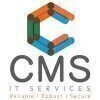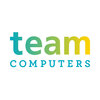
i
Kaizen IT
Services
Filter interviews by
Kaizen IT Services Desktop Support Engineer Interview Questions and Answers
15 Interview questions
SLA stands for Service Level Agreement, defining expected service standards between providers and clients.
SLA outlines the specific services provided, such as response times and resolution times.
For example, an SLA may state that critical issues will be resolved within 4 hours.
It includes metrics for measuring service performance, like uptime percentages.
SLAs help manage client expectations and provide a framework...
Linux is an open-source operating system based on Unix, widely used for servers, desktops, and embedded systems.
Open-source: Linux source code is freely available for modification and distribution.
Distributions: Various versions like Ubuntu, CentOS, and Fedora cater to different user needs.
Command Line Interface: Linux often relies on terminal commands for system management.
Security: Known for its robust security ...
To speed up a PC, you can optimize startup programs, clean up disk space, update software, increase RAM, and use a solid state drive.
Optimize startup programs by disabling unnecessary ones from running at startup
Clean up disk space by deleting temporary files, uninstalling unused programs, and running disk cleanup tool
Update software including operating system, drivers, and applications
Increase RAM to improve mult...
To work the antivirus, you need to install, update, and run regular scans to protect your computer from malware.
Install antivirus software on your computer
Regularly update the antivirus software to ensure it has the latest virus definitions
Schedule regular scans of your computer to check for malware
Be cautious of suspicious emails or websites that may contain malware
Quarantine or delete any threats detected by the...
Regularly clean up temporary files, uninstall unnecessary programs, update drivers and software, optimize startup programs, and run disk cleanup and defragmentation.
Regularly clean up temporary files to free up disk space
Uninstall unnecessary programs to reduce system load
Update drivers and software for better performance
Optimize startup programs to reduce boot time
Run disk cleanup and defragmentation to improve d...
To format a PC, you can use the built-in Windows tool called 'Reset this PC' or reinstall the operating system from a bootable USB drive.
Backup important data before formatting the PC
Use 'Reset this PC' feature in Windows settings for a quick format
Reinstall the operating system from a bootable USB drive for a clean format
Follow on-screen instructions during the formatting process
DNS stands for Domain Name System, which translates domain names to IP addresses. DHCP stands for Dynamic Host Configuration Protocol, which assigns IP addresses to devices on a network.
DNS is like a phone book for the internet, translating domain names (like google.com) to IP addresses (like 172.217.3.206)
DHCP automatically assigns IP addresses to devices on a network, making it easier to manage and configure lar...
Transferring data during a domain join involves migrating user profiles and settings to a new domain environment.
Use Windows Easy Transfer to move user data and settings.
Utilize the User State Migration Tool (USMT) for advanced data transfer.
Backup data to an external drive before joining the domain.
Consider using Group Policy to manage user settings post-domain join.
Straight cable colour coding is the standard colour scheme used to connect networking devices.
Straight cable colour coding follows the T568A or T568B standard.
In T568A, the colour coding is: white-green, green, white-orange, blue, white-blue, orange, white-brown, brown.
In T568B, the colour coding is: white-orange, orange, white-green, blue, white-blue, green, white-brown, brown.
The colour coding helps ensure prope...
To install Windows 10, you can use a USB drive or DVD to boot from and follow the on-screen instructions.
Create a bootable USB drive or DVD with the Windows 10 installation files
Insert the USB drive or DVD into the computer and restart it
Boot from the USB drive or DVD by changing the boot order in BIOS settings
Follow the on-screen instructions to select language, time and currency format, and keyboard or input met...
Kaizen IT Services Desktop Support Engineer Interview Experiences
10 interviews found
(2 Questions)
- Q1. How many tips of rom
- Ans.
There are two types of ROM: PROM (Programmable Read-Only Memory) and EPROM (Erasable Programmable Read-Only Memory).
PROM is programmed only once by the manufacturer and cannot be changed by the user.
EPROM can be erased and reprogrammed multiple times using ultraviolet light.
Examples of ROM include BIOS in computers and firmware in electronic devices.
- Q2. There are two types of ram
- Ans.
The two types of RAM are DRAM (Dynamic Random Access Memory) and SRAM (Static Random Access Memory).
DRAM is cheaper and slower, while SRAM is faster and more expensive.
DRAM requires refreshing to maintain data, while SRAM does not.
Examples of DRAM include DDR3 and DDR4, while examples of SRAM include L1 and L2 cache.
DRAM is used in main memory, while SRAM is used in cache memory.
(2 Questions)
- Q1. How to install windows 10
- Ans.
To install Windows 10, you can use a USB drive or DVD to boot from and follow the on-screen instructions.
Create a bootable USB drive or DVD with the Windows 10 installation files
Insert the USB drive or DVD into the computer and restart it
Boot from the USB drive or DVD by changing the boot order in BIOS settings
Follow the on-screen instructions to select language, time and currency format, and keyboard or input method
Ch...
- Q2. Attach the usb flash drive or install windows
- Ans.
I would attach the USB flash drive to install Windows.
Insert the USB flash drive into an available USB port on the computer
Restart the computer and boot from the USB drive
Follow the on-screen instructions to install Windows
(2 Questions)
- Q1. Where do u live ?
- Q2. Iam live in nagaon
Interview Preparation Tips
Skills evaluated in this interview
I appeared for an interview in Feb 2025, where I was asked the following questions.
- Q1. What is sla
- Ans.
SLA stands for Service Level Agreement, defining expected service standards between providers and clients.
SLA outlines the specific services provided, such as response times and resolution times.
For example, an SLA may state that critical issues will be resolved within 4 hours.
It includes metrics for measuring service performance, like uptime percentages.
SLAs help manage client expectations and provide a framework for ...
- Q2. What is linux
- Ans.
Linux is an open-source operating system based on Unix, widely used for servers, desktops, and embedded systems.
Open-source: Linux source code is freely available for modification and distribution.
Distributions: Various versions like Ubuntu, CentOS, and Fedora cater to different user needs.
Command Line Interface: Linux often relies on terminal commands for system management.
Security: Known for its robust security featu...
Interview Preparation Tips
I applied via Job Portal
(4 Questions)
- Q1. How to fast the PC do not have format
- Ans.
Regularly clean up temporary files, uninstall unnecessary programs, update drivers and software, optimize startup programs, and run disk cleanup and defragmentation.
Regularly clean up temporary files to free up disk space
Uninstall unnecessary programs to reduce system load
Update drivers and software for better performance
Optimize startup programs to reduce boot time
Run disk cleanup and defragmentation to improve disk p...
- Q2. How to format the pc
- Ans.
To format a PC, you can use the built-in Windows tool called 'Reset this PC' or reinstall the operating system from a bootable USB drive.
Backup important data before formatting the PC
Use 'Reset this PC' feature in Windows settings for a quick format
Reinstall the operating system from a bootable USB drive for a clean format
Follow on-screen instructions during the formatting process
- Q3. How to fast the work the PC
- Ans.
To speed up a PC, you can optimize startup programs, clean up disk space, update software, increase RAM, and use a solid state drive.
Optimize startup programs by disabling unnecessary ones from running at startup
Clean up disk space by deleting temporary files, uninstalling unused programs, and running disk cleanup tool
Update software including operating system, drivers, and applications
Increase RAM to improve multitask...
- Q4. How to work the antivirus
- Ans.
To work the antivirus, you need to install, update, and run regular scans to protect your computer from malware.
Install antivirus software on your computer
Regularly update the antivirus software to ensure it has the latest virus definitions
Schedule regular scans of your computer to check for malware
Be cautious of suspicious emails or websites that may contain malware
Quarantine or delete any threats detected by the anti...
Skills evaluated in this interview
(4 Questions)
- Q1. Dhscp dns pst ost
- Q2. Domain join how transfer data
- Ans.
Transferring data during a domain join involves migrating user profiles and settings to a new domain environment.
Use Windows Easy Transfer to move user data and settings.
Utilize the User State Migration Tool (USMT) for advanced data transfer.
Backup data to an external drive before joining the domain.
Consider using Group Policy to manage user settings post-domain join.
- Q3. What is the dns and dhcp
- Ans.
DNS stands for Domain Name System, which translates domain names to IP addresses. DHCP stands for Dynamic Host Configuration Protocol, which assigns IP addresses to devices on a network.
DNS is like a phone book for the internet, translating domain names (like google.com) to IP addresses (like 172.217.3.206)
DHCP automatically assigns IP addresses to devices on a network, making it easier to manage and configure large ne...
- Q4. Profile rename os installation
- Ans.
Profile rename during OS installation involves changing the user account name.
During OS installation, choose 'Customize' option to rename profile
Ensure to backup data before renaming profile
After installation, update user account settings with new name
Interview Preparation Tips
Skills evaluated in this interview
(1 Question)
- Q1. Basic about hardware
I applied via Approached by Company and was interviewed in Sep 2023. There was 1 interview round.
(1 Question)
- Q1. Troubleshooting, Networking
I appeared for an interview before May 2024, where I was asked the following questions.
- Q1. Can you tell me about yourself?
- Q2. What is your total job experience?
- Ans.
I have over 5 years of experience in desktop support, focusing on troubleshooting, user training, and system maintenance.
Provided technical support for over 300 users in a corporate environment, resolving issues related to hardware and software.
Managed the installation and configuration of operating systems and applications, ensuring optimal performance.
Conducted training sessions for new employees on software usage an...
I applied via Indeed and was interviewed in Aug 2022. There were 2 interview rounds.

(2 Questions)
- Q1. System not power on which problem in system?
- Ans.
The problem could be due to a faulty power supply, motherboard, or other hardware components.
Check if the power supply is properly connected and functioning
Check if the motherboard is receiving power
Check if any hardware components are loose or damaged
Check if there are any error messages or beeps during startup
- Q2. No display in system which is checking in issues?
- Ans.
Check if the system is powered on and connected to the display. Verify display settings and cables.
Check if the system is powered on and connected to the display
Verify display settings and cables
Try connecting to a different display or use a different cable
Check if the graphics card is properly seated and functioning
Check for any error messages or beeps during startup
Interview Preparation Tips
Skills evaluated in this interview
I applied via Walk-in and was interviewed before Apr 2023. There were 2 interview rounds.
(1 Question)
- Q1. What is Straight Cable Colour Coding?
- Ans.
Straight cable colour coding is the standard colour scheme used to connect networking devices.
Straight cable colour coding follows the T568A or T568B standard.
In T568A, the colour coding is: white-green, green, white-orange, blue, white-blue, orange, white-brown, brown.
In T568B, the colour coding is: white-orange, orange, white-green, blue, white-blue, green, white-brown, brown.
The colour coding helps ensure proper con...
(1 Question)
- Q1. Tell me about your experience?
Interview Preparation Tips
Skills evaluated in this interview
I applied via Naukri.com and was interviewed before Apr 2023. There was 1 interview round.
(1 Question)
- Q1. Self introduction Knowledge of hardware software Windows os Printer configuration Networking and ip
Top trending discussions






Kaizen IT Services Interview FAQs
The duration of Kaizen IT Services Desktop Support Engineer interview process can vary, but typically it takes about less than 2 weeks to complete.
Tell us how to improve this page.
Kaizen IT Services Interviews By Designations
- Kaizen IT Services Desktop Support Engineer Interview Questions
- Kaizen IT Services Senior Desktop Support Engineer Interview Questions
- Kaizen IT Services IT Support Technician Interview Questions
- Kaizen IT Services Software Developer Interview Questions
- Kaizen IT Services Associate Engineer Interview Questions
- Kaizen IT Services Field Engineer Interview Questions
- Kaizen IT Services Service Engineer Interview Questions
- Kaizen IT Services Information Technology Support Engineer Interview Questions
- Show more
Interview Questions for Popular Designations
- Software Engineer Interview Questions
- Senior Engineer Interview Questions
- Devops Engineer Interview Questions
- Technical Support Engineer Interview Questions
- Network Engineer Interview Questions
- Support Engineer Interview Questions
- Desktop Support Engineer L1 and L2 Interview Questions
- Desktop Engineer Interview Questions
- Show more
Overall Interview Experience Rating
based on 16 interview experiences
Difficulty level
Duration
Desktop Support Engineer Interview Questions from Similar Companies
Kaizen IT Services Desktop Support Engineer Reviews and Ratings
based on 163 reviews
Rating in categories
|
Desktop Support Engineer
256
salaries
| ₹1.5 L/yr - ₹3.7 L/yr |
|
Desktop Engineer
41
salaries
| ₹1 L/yr - ₹2.7 L/yr |
|
Team Lead
32
salaries
| ₹1.8 L/yr - ₹5.3 L/yr |
|
Network Engineer
30
salaries
| ₹1.8 L/yr - ₹4 L/yr |
|
Technical Support Engineer
28
salaries
| ₹2 L/yr - ₹5 L/yr |

ITC Infotech

CMS IT Services

KocharTech

Xoriant
- Home >
- Interviews >
- Kaizen IT Services Interview Questions












